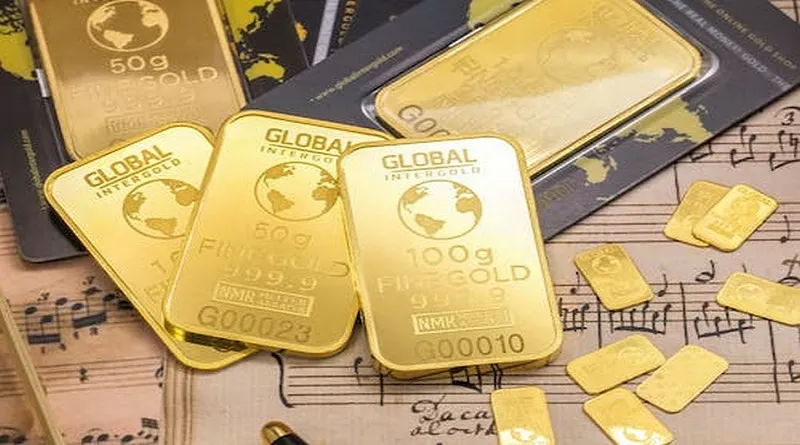Gold, often referred to as the “king of metals,” has captivated humanity for centuries with its intrinsic value, beauty, and versatility. As one of the oldest and most cherished forms of currency, gold holds a special place in the hearts and minds of people around the world. But what exactly is gold worth, and how is its value determined? In this comprehensive guide, we’ll explore the factors that influence the worth of gold, its various uses, and how its value is measured in the global marketplace.
Understanding Gold’s Worth
Before delving into the factors that determine gold’s worth, it’s essential to understand the fundamental principles that underpin its value.
Intrinsic Value:
Gold possesses intrinsic value due to its scarcity, durability, and aesthetic appeal. Unlike fiat currency, which relies on the faith and credit of the issuing government, gold has inherent worth that transcends geopolitical boundaries.
Throughout history, gold has been used as a medium of exchange, a store of value, and a hedge against inflation and economic uncertainty.
Supply and Demand:
Like any commodity, the value of gold is influenced by the forces of supply and demand. Changes in supply, such as new gold discoveries or fluctuations in mining output, can impact its price.
Demand for gold is driven by various factors, including investment demand, industrial use, jewelry consumption, and central bank purchases.
Market Sentiment:
Market sentiment, investor perceptions, and geopolitical events can also influence gold prices. During times of economic turmoil or geopolitical instability, investors often seek the safety and security of gold, driving up its price.
Conversely, periods of economic growth and stability may lead to reduced demand for gold as investors favor riskier assets.
Factors Influencing Gold’s Value
Now that we’ve established the foundational principles of gold’s worth, let’s explore the specific factors that influence its value in the marketplace.
Supply Constraints:
Gold is a finite resource, and its supply is limited by factors such as geological constraints, mining costs, and regulatory restrictions.
While new gold discoveries and technological advancements may increase the available supply of gold over time, the overall supply remains relatively stable compared to other commodities.
Central Bank Policies:
Central banks play a significant role in shaping the gold market through their monetary policies and gold reserves.
Central bank purchases and sales of gold can impact its price and serve as a signal of confidence in the global economy.
Inflation and Currency Devaluation:
Gold is often viewed as a hedge against inflation and currency devaluation since it maintains its purchasing power over time.
During periods of high inflation or currency depreciation, investors may flock to gold as a safe haven asset to preserve their wealth.
Investor Sentiment:
Investor sentiment and market psychology can have a significant impact on gold prices, leading to fluctuations in the market.
Factors such as interest rates, stock market performance, and macroeconomic indicators can influence investor confidence in gold as an investment asset.
Industrial and Jewelry Demand:
While investment demand is a significant driver of gold prices, industrial and jewelry demand also play a crucial role in determining its worth.
Gold is used in various industries, including electronics, dentistry, and aerospace, as well as in the production of fine jewelry and luxury goods.
Methods of Measuring Gold’s Worth
Gold’s worth is measured and expressed in various ways, depending on the context and the specific market conditions.
Spot Price:
The spot price of gold refers to the current market price at which gold is bought and sold for immediate delivery.
Spot prices are quoted in major currencies such as US dollars per troy ounce and are determined by global supply and demand dynamics.
Futures Contracts:
Gold futures contracts allow investors to buy or sell gold at a predetermined price on a specified future date.
Futures prices reflect market expectations for future gold prices based on factors such as supply and demand, interest rates, and geopolitical events.
Gold Indices:
Gold indices, such as the London Bullion Market Association (LBMA) Gold Price and the S&P GSCI Gold Index, track the performance of gold prices over time.
These indices provide investors with a benchmark for evaluating the performance of gold investments relative to the broader market.
Conclusion
In conclusion, the worth of gold is determined by a combination of intrinsic value, supply and demand dynamics, market sentiment, and geopolitical factors. As a timeless store of value and a symbol of wealth and prosperity, gold holds a special place in the hearts and minds of people around the world. Whether used for investment purposes, industrial applications, or adornment, gold’s enduring allure and universal appeal make it a valuable asset for investors and collectors alike. By understanding the factors that influence gold’s worth and the methods used to measure its value, investors can make informed decisions and navigate the complex and dynamic world of gold markets.

